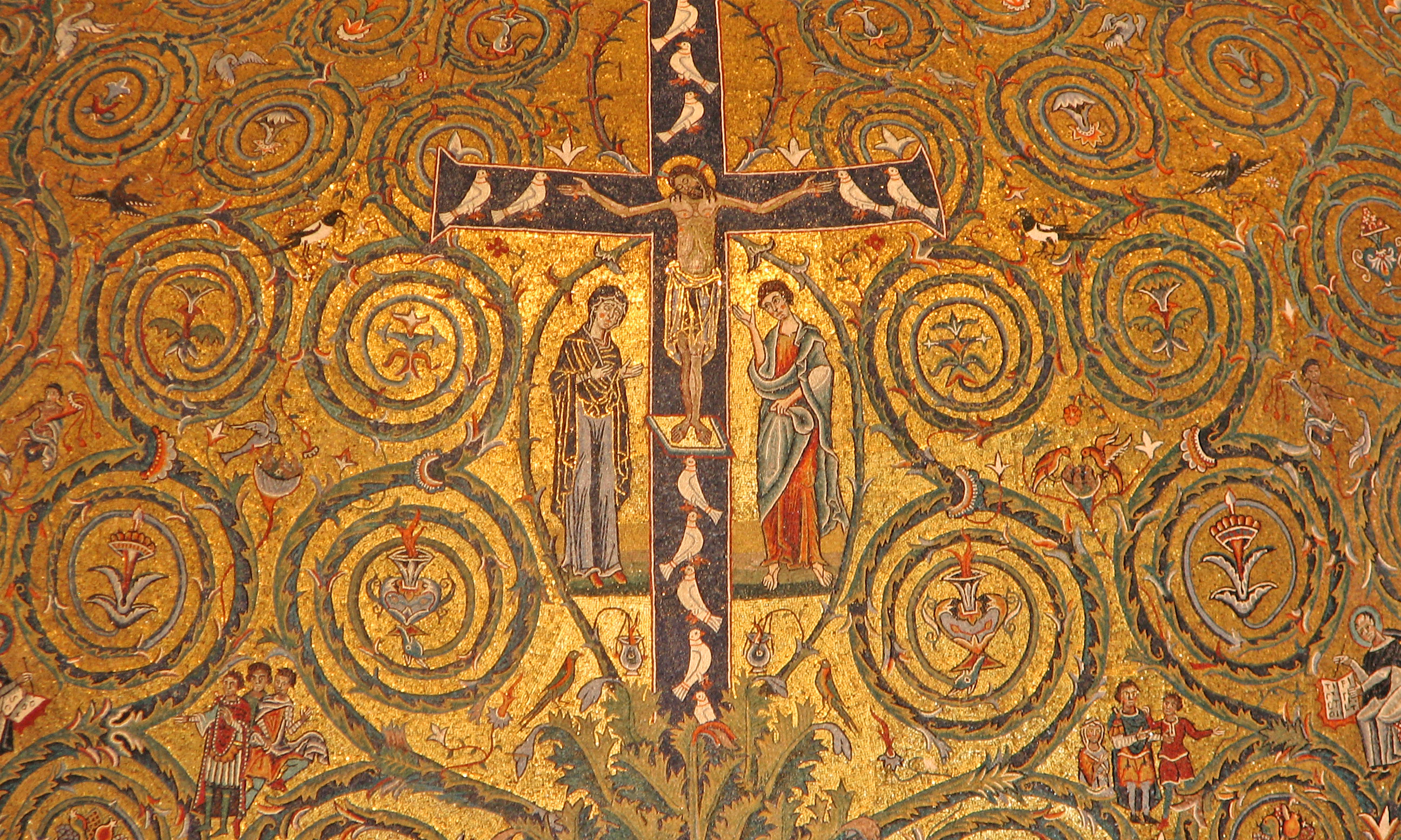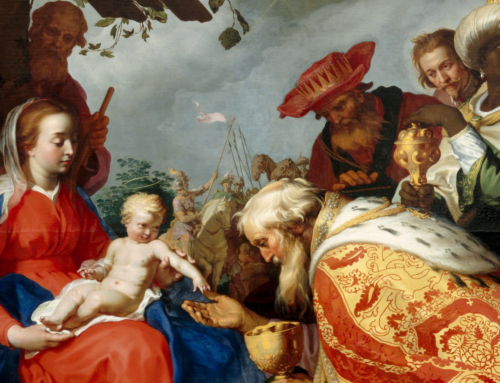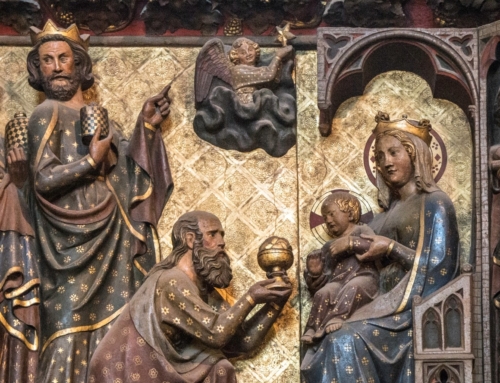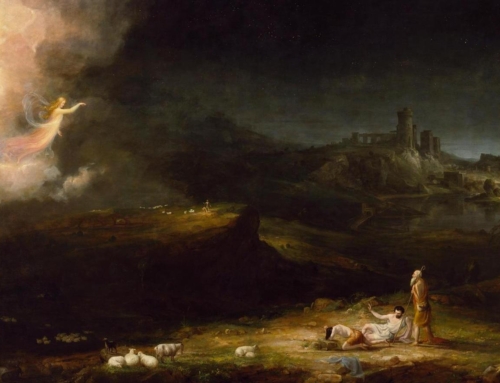Christmas is subversive. The eternal, immutable, transcendent, and all-good and powerful Son of God deigned to descend from the heavens and take on our very flesh. He was conceived in the womb of a virgin. Mary’s womb became a tabernacle wherein the Lord’s assumed humanity would gestate into an embryo, and then a fetus, and finally a newborn. On Christmas, the God-babe lay in, of all things, a feeding trough in a back stable on the outskirts of the little town, Bethlehem, beheld by the loving gaze of his parents and adored by choirs of angels and other visitors. It was in the quiet of this rustic locale that occurred the most significant event in the history of the cosmos since God’s act of creation in the beginning (Gen 1:1). No other religious tradition teaches anything remotely like it.
But the peace on earth (Lk 2:14) of that night divine would be short-lived—indeed, forestalled until an age still yet to come—for with radical events come radical consequences. On the shoulders of the humble and helpless Christ-child rests the government of eternal peace, the kingdom not of this world, the increase of which will have no end (Jn 18:36; Is 9:6-7). By contrast, in the zero-sum game of this-worldly power plays, one king’s sovereignty interferes with that of another. It’s your land or my land for your reign or my reign. So when Herod heard the news of a certain supernal invasion into his fiefdom, he was troubled (Mt 2:3), thinking his kingdom usurped, and in his envy and pride, he began a search for the child, to destroy him (Mt 2:13). We see here a textbook case of the way that sin begets sin: Herod chose to entertain and contemplate his initial temptations rather than brush them away, and from that contemplation came forth further evil thoughts and finally the plans to make them a reality. Once the Magi, aided by angelic instruction, opted for a detour home and slighted Herod’s request for more intelligence about the child, Herod’s envy turned into a furious rage (Mt 2:16), and the initial search-and-destroy mission escalated to an infanticidal massacre, the memory of which we celebrate today, the feast of the Holy Innocents.
What is it about Christmas that leads us from the serenity of the stable to the horrific atrocities that followed upon Herod’s power-hungry fit? Saint Paul provides us with an apt answer: Christ Jesus came into the world to save sinners (1 Thes 1:15). Sin’s reign over mankind has been congenital since the Fall. It has deeply damaged, though not changed, our human nature. To save sinners, then, is to defeat sin’s reign, to repair our flesh, and to vanquish sin’s penalty of eternal death. It is to heal the cosmic wounds effected by original sin and to restore to creation an ordo amoris, an order of love by which mankind might be united perfectly with God.
But so great a subversion of sin, so great a victory of life over the powers of darkness and death—the likes of Herod and company and, ultimately, the evil one—comes at a steep price. Christ, born to save, was preparing to embrace that price from the get-go. Of the heavenly infant and his mission, the haunting hymn, “What Child is This?”, speaks: “Nails, spear shall pierce Him through, / The Cross be borne for me, for you.” To confront the radicality of Christmas, then, is to see the wood of the Cross in the wood of the manger, the seamless garment in the swaddling clothes, the King of the Jews in the tiny king adored by the Magi, and the mature Mary at the foot of her son on Golgotha in the young Mary who kept all these things, pondering them in her heart (Lk 2:19)—things that told of the Passion to come. Yes, to confront the radicality of Christmas is even to foresee in the innocent infant’s soft, pudgy hands, feet, and side the wounds that were to be inflicted in 33 years’ time.
Christmas, like everything about Christ, points straight to Calvary, for it is there that the Root of Jesse fully shot forth into the Cross, the new Tree of Life on which Christ uprooted us from sin, striking the earth with the rod of his mouth, and with the breath of his lips slaying the wicked (Is 11:4). In that shoot, that true vine who is Christ, we abide (Jn 15:14) and consume the fruit which is eternal life. Such is the purpose of that subversive, saving power—our sole hope and destiny—made manifest at Christmas under the meek and mild appearance of that mysterious Bethlehem babe.
✠
Photo by Fr. Lawrence Lew, O.P. (used with permission)







